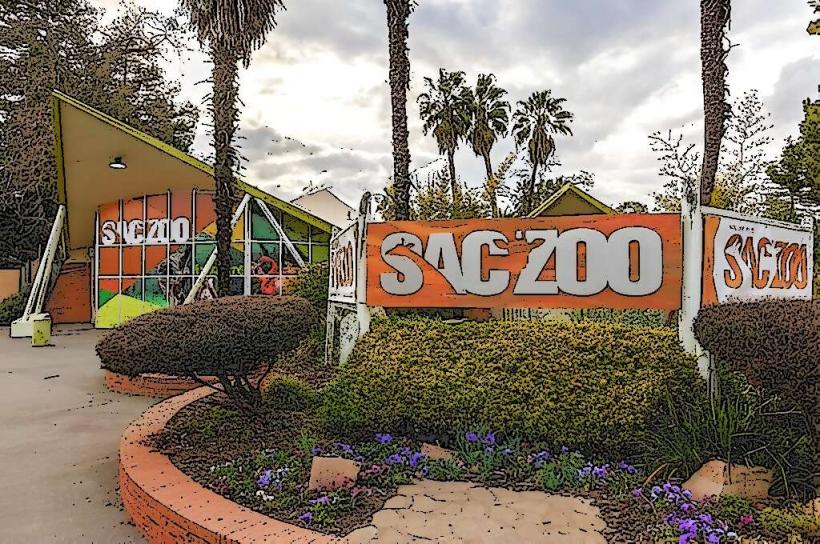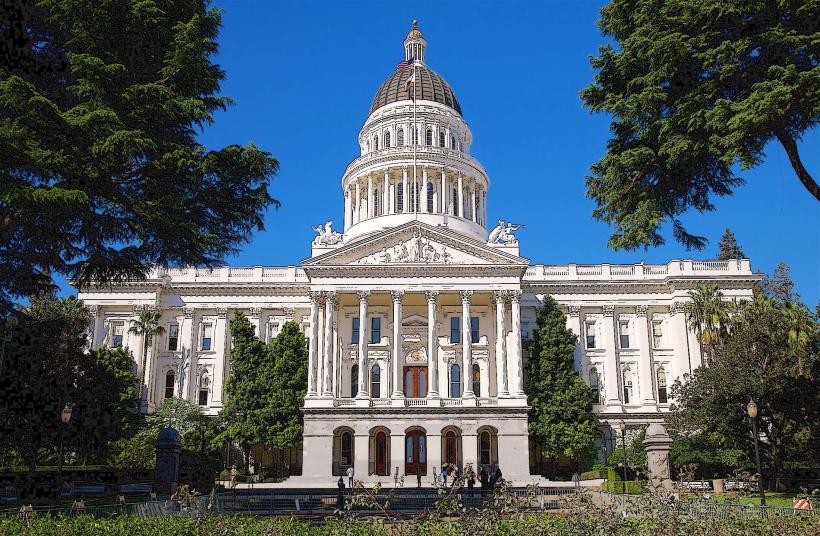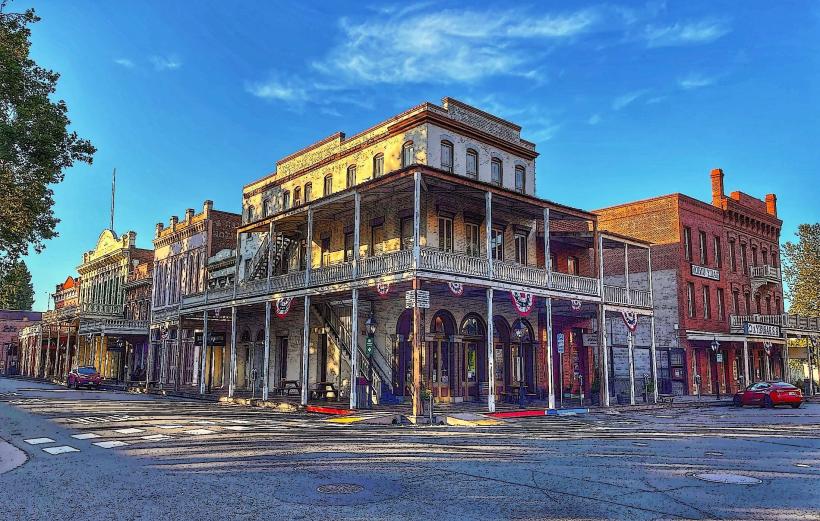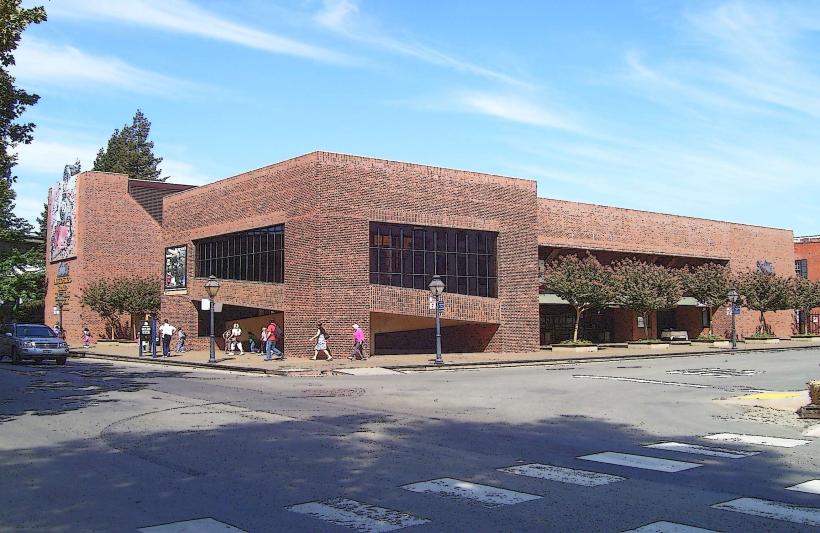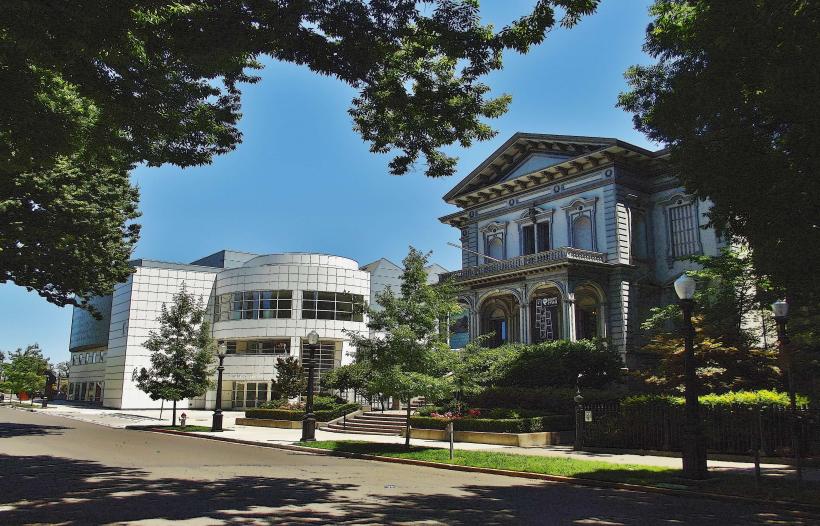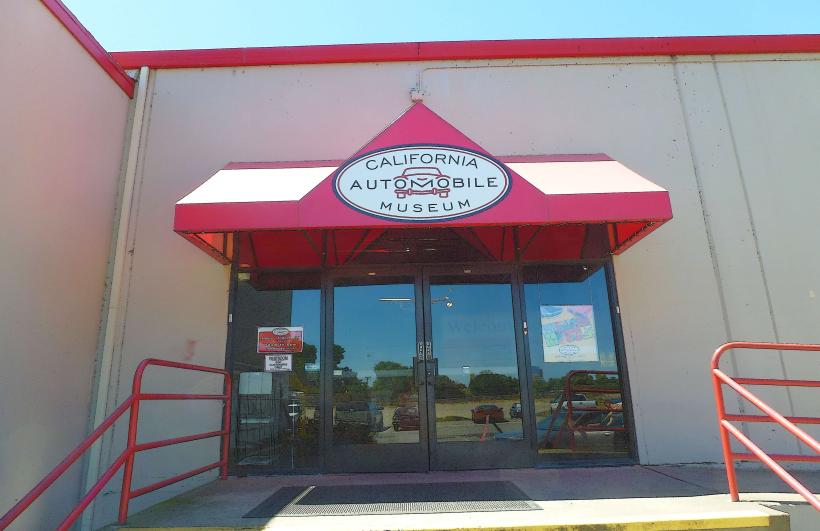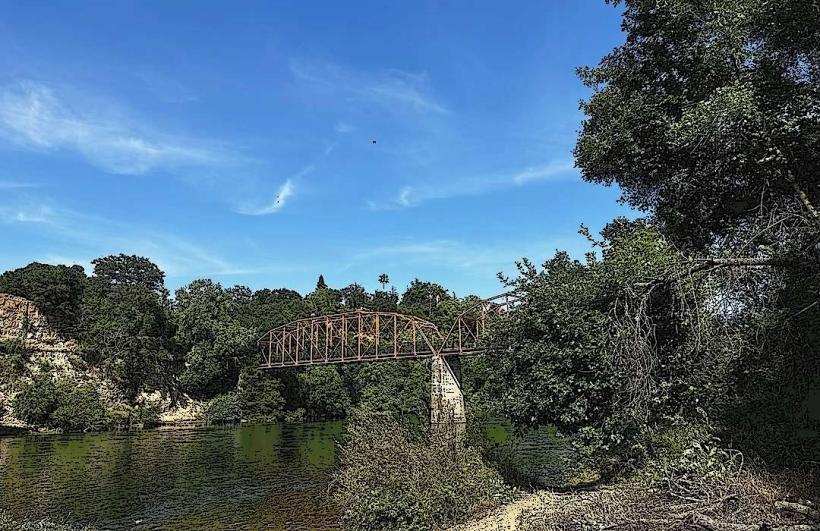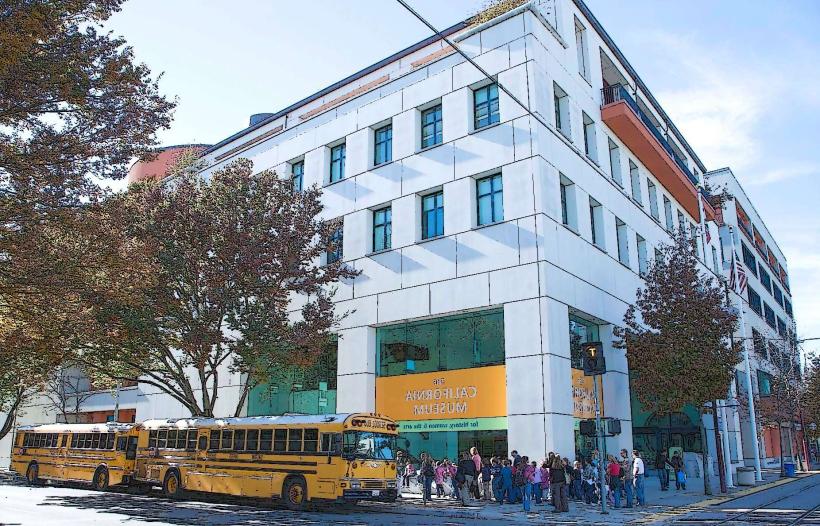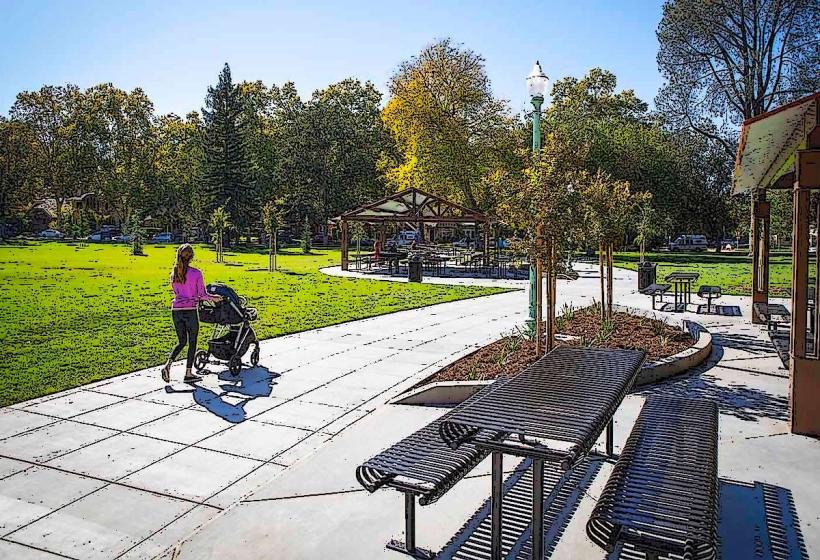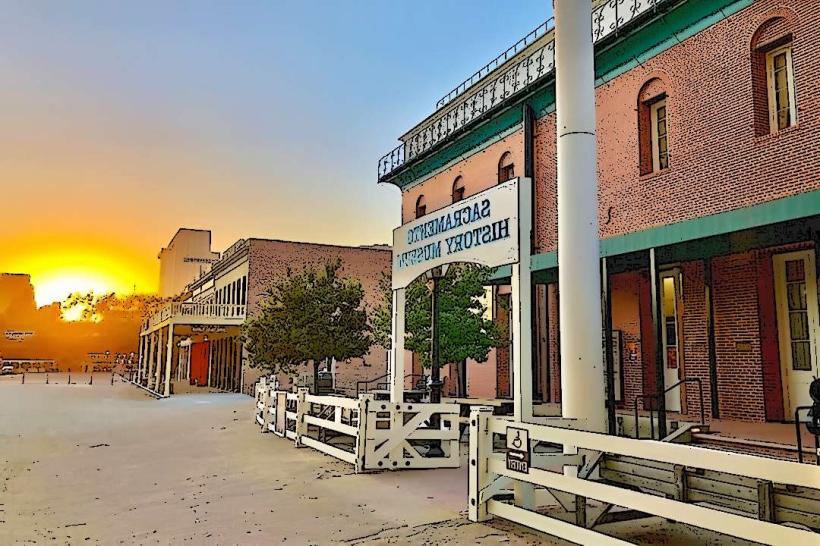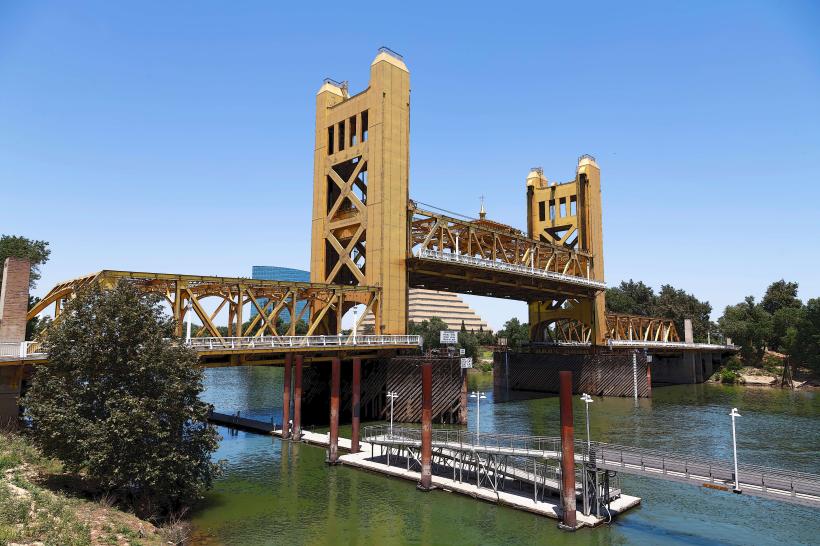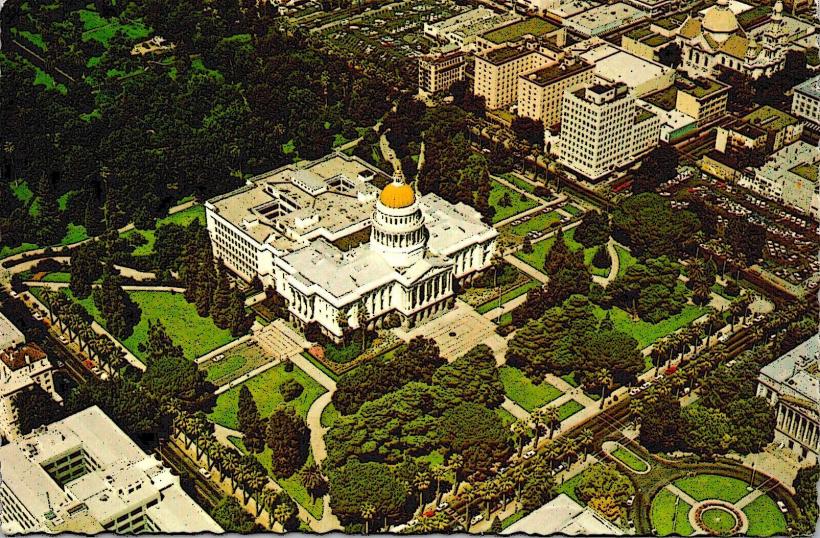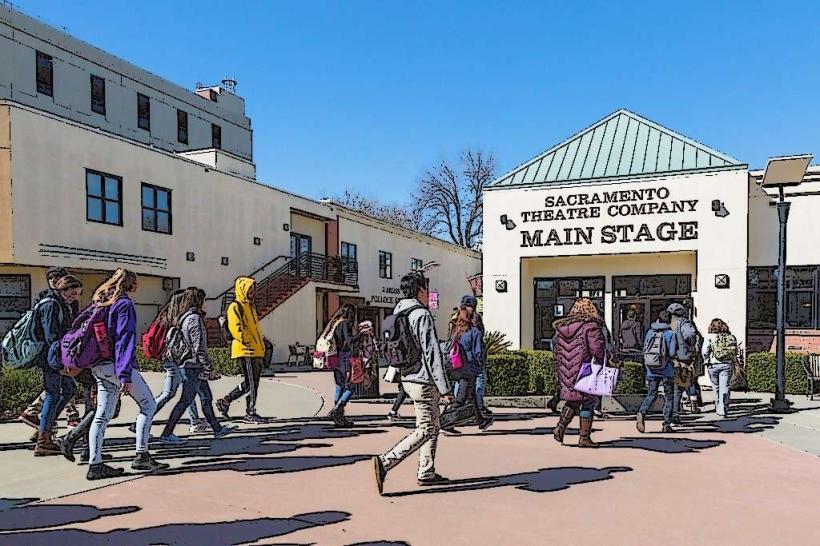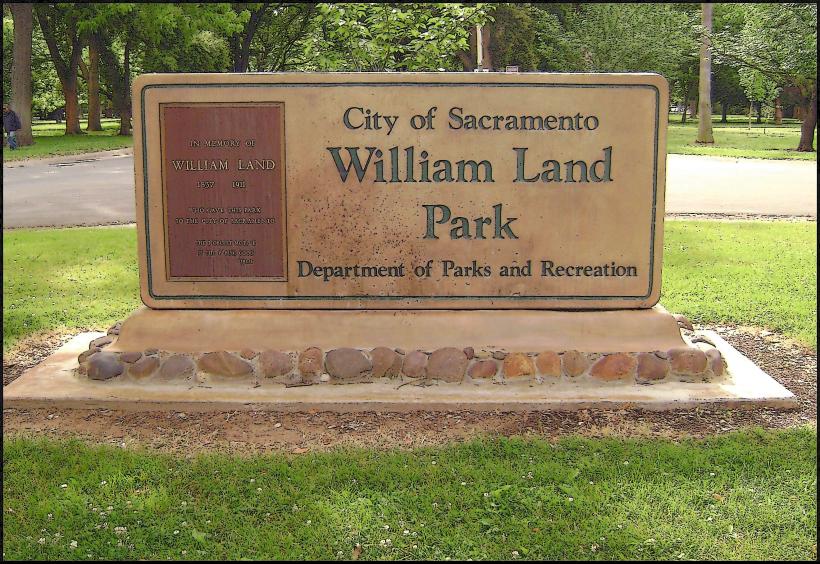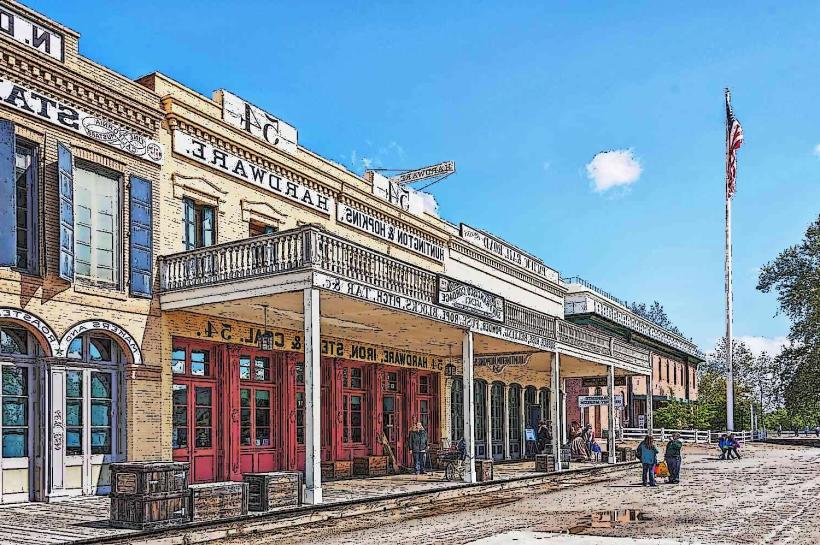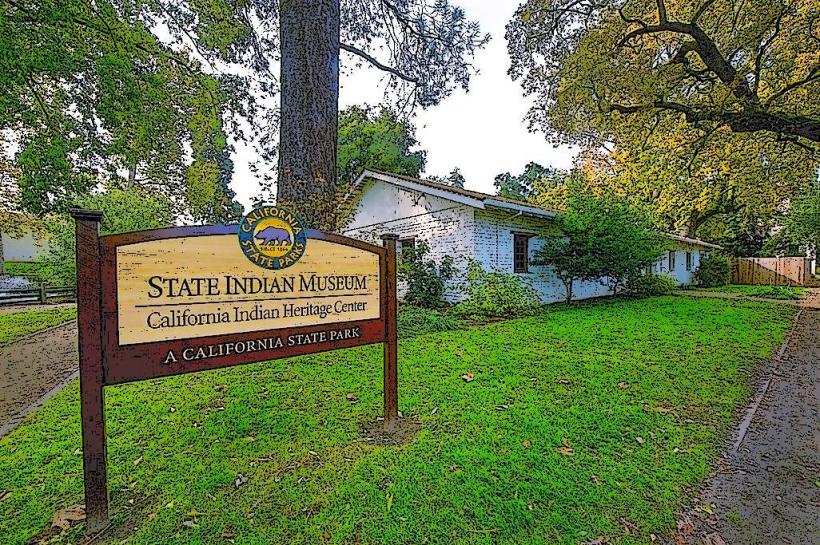Information
Landmark: Sutter’s Fort State Historic ParkCity: Sacramento
Country: USA California
Continent: North America
Sutter’s Fort State Historic Park, Sacramento, USA California, North America
Sutter’s Fort State Historic Park is a historic site in midtown Sacramento, California, offering a detailed and immersive look into life in early California during the 1830s and 1840s, prior to statehood. It preserves and interprets the original site of John Augustus Sutter’s 19th-century fort—one of the earliest non-Indigenous settlements in the Sacramento Valley—and reveals the complex, often controversial legacy of westward expansion.
Historical Background
Sutter’s Fort was founded in 1839 by John A. Sutter, a Swiss immigrant who received a large Mexican land grant known as New Helvetia (meaning "New Switzerland"). The fort became a major agricultural, trade, and military outpost in what was then Mexican Alta California.
Sutter envisioned the site as a self-sufficient settlement, and over time, it attracted fur trappers, settlers, and laborers. It also became a key resupply station for overland emigrants coming west via the California Trail. The fort’s prosperity peaked in the mid-1840s, before the discovery of gold at nearby Sutter’s Mill in 1848 (which launched the California Gold Rush) overwhelmed Sutter’s operations and displaced his authority.
Architecture and Structure
The fort was constructed using adobe brick and timber, enclosing a rectangular 2.5-acre space with 15-foot-high walls. At its center was the Main Building, the only original structure still standing today, which served as a warehouse, living quarters, and administrative office.
The rest of the site has been faithfully reconstructed using period-accurate techniques and historical records. Within the walls are a series of furnished rooms that represent various trades and daily activities from the 1840s, such as:
Blacksmith shop
Carpentry room
Weaving and spinning room
Bakery
Storehouse
Hospital and doctor’s quarters
Each area provides visitors with insight into the fort's function as a self-sufficient economic and military center.
Sutter’s Legacy and Controversy
While John Sutter is often credited as a pioneering figure in California’s settlement history, his legacy is complex and controversial. He relied heavily on forced Indigenous labor, with reports of Native people being coerced, punished, and subjected to harsh conditions within his domain. Many modern historians and Indigenous communities view Sutter’s rule as oppressive and exploitative.
California State Parks and local educational organizations have worked in recent years to present a more accurate and inclusive portrayal of Sutter’s Fort, emphasizing the experiences of Native Californians and the diverse populations who lived and worked there—many involuntarily.
Museum and Educational Features
The fort operates as a living history museum, offering:
Self-guided tours through fully furnished rooms with period tools and artifacts.
Interactive displays demonstrating 19th-century skills and trades.
Hands-on History Days: Held monthly, featuring costumed interpreters performing tasks such as soap-making, musket firing, carpentry, and textile production.
Environmental Living Program: An immersive overnight educational experience where students assume historical roles and live as early Californians for a day.
These programs are especially popular among schools and youth groups across Northern California.
Significance of the Fort
Sutter’s Fort played a crucial role in:
Assisting early overland pioneers (including the ill-fated Donner Party).
Establishing trade routes between California and the Pacific Northwest.
Hosting various cultural groups during a transitional period from Mexican to American governance.
Influencing early California politics and economic development before and after the Gold Rush.
It also served as the last place of refuge for many emigrants before they dispersed across the interior of California.
Visitor Information
Location: 2701 L Street, Sacramento, CA 95816
Hours: Daily from 10:00 AM to 5:00 PM (last admission at 4:30 PM); closed on Thanksgiving, Christmas, and New Year’s Day
Admission Fees:
Adults (18+): $5
Youth (6–17): $3
Children (under 5): Free
There is limited parking around the site, with street and garage options nearby. The museum is wheelchair accessible.
Interpretive Goals and Updates
The site has undergone several interpretive revisions in the 21st century to better reflect:
The multicultural and multilingual population that passed through or lived at the fort.
The contributions of women, Native peoples, and other marginalized communities.
The colonial impacts of expansion on California’s Indigenous populations.
The legacy of land ownership, labor systems, and cultural transformation in early California.
These changes aim to present Sutter’s Fort not as a romanticized outpost, but as a complicated and instructive chapter in the state's early formation.
Sutter’s Fort remains a key destination for understanding pre-Gold Rush California, offering a rare look at frontier life, settlement challenges, and the real human stories behind early westward expansion.

